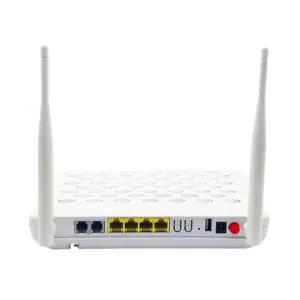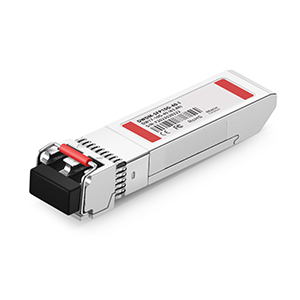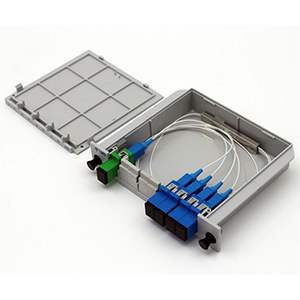Thank you for reading this article, today I will introduce you to fiber optic ports and their important role in network equipment and communications. As an interface connecting optical fiber transmission media, fiber optic ports play a key bridge role in modern communications. Let’s learn how fiber optic ports differ from traditional copper ports and what their advantages are.
Basic overview of fiber optic ports
Fiber optic port refers to the interface used to connect fiber optic cables, which plays an important role in network equipment and communications. Here is a basic overview of fiber optic ports, their role in network equipment and communications, and their differences and advantages over traditional copper ports:
-
Overview and functions of fiber optic ports:
Fiber optic ports are physical interfaces on network devices (such as switches, routers, fiber optic converters, etc.) that are used to connect fiber optic cables. It provides a channel for optical fiber transmission, allowing optical signals to be transmitted between devices at high speed.The role of the fiber optic port is to plug the fiber optic cable into the device and ensure stable transmission of signals. It allows fiber optic connections between devices to achieve high-speed, high-bandwidth data transmission and is widely used in various network environments, including data centers, enterprise networks, and wide area networks.
The differences and advantages of optical fiber ports and traditional copper cable ports:
-
Transmission speed and bandwidth: Fiber optic ports transmit data through optical signals, with higher transmission speed and greater bandwidth. In comparison, traditional copper cable ports (such as RJ45 ports) have lower transmission speeds and bandwidth.
-
Anti-interference: The optical signal transmission method of the optical fiber port makes it have good anti-interference performance. Optical signals are not easily affected by electromagnetic interference when transmitted in optical fibers, and can maintain signal stability during long-distance transmission. The transmission of copper cable ports is greatly affected by electromagnetic interference.
-
Distance and loss: Fiber optic ports can achieve longer distance signal transmission with little effect from signal attenuation. In comparison, copper cable ports carry signals over shorter distances and the signal is attenuated.
-
Security: Fiber optic signals do not produce electromagnetic radiation during transmission and are difficult to be eavesdropped and interfered with, providing higher data security. Electrical signals transmitted over copper cables are susceptible to eavesdropping and interference.
-
Weight and volume: Fiber optic ports are relatively light and small, making network equipment more compact and easier to wire. In comparison, copper cable ports are larger and heavier.
-
Types and standards of fiber optic ports
Common fiber port types include LC, SC, ST, FC, etc. Each type of fiber optic port has different characteristics and applicable scenarios. In addition, there are some standards and specifications used to describe the characteristics and performance of fiber optic ports, such as SFP, SFP+, QSFP, etc.
-
LC (Lucent Connector): The LC port is a small fiber optic connector with low insertion loss and high density. LC ports are commonly used in high-speed data transmission and high-density network equipment, such as data centers and enterprise networks.
-
SC (Standard Connector): The SC port is a common fiber optic connector with easy plugging and unplugging and good mechanical stability. SC ports are suitable for single-mode and multi-mode optical fiber and are widely used in applications such as LAN, WAN and fiber optic communications.
-
ST (Straight Tip): The ST port is an earlier fiber optic connector that has larger external dimensions and a threaded connection mechanism. The ST port is mainly used for multi-mode optical fiber and is suitable for some older network equipment and communication systems.
-
FC (Ferrule Connector): FC port is a common fiber optic connector with threaded connection and high-precision insertion loss characteristics. FC ports are typically used in applications requiring high accuracy, such as fiber optic sensors and measurement equipment.
Standards and specifications for fiber optic ports describe their characteristics and performance to ensure interoperability and consistency. Here are some common fiber optic port standards and specifications:
-
SFP (Small Form-Factor Pluggable): SFP is a hot-swappable optical module specification used to support the transmission of optical fiber and copper cables. SFP modules can provide a variety of connection types and transmission rate options, and are widely used in Ethernet, optical fiber communications and storage fields.
-
SFP+ (Enhanced Small Form-Factor Pluggable): SFP+ is an upgraded version of SFP, providing higher transmission rate and bandwidth. SFP+ modules are commonly used in 10GbE (Gigabit Ethernet) and fiber optic communications applications.
-
QSFP (Quad Small Form-Factor Pluggable): QSFP is a high-density optical fiber module specification that supports the transmission of four channels. QSFP modules provide higher transmission rates and bandwidth and are commonly used in high-speed network connections such as 40GbE and 100GbE.
These standards and specifications ensure the interoperability and compatibility of fiber optic ports so that devices and modules from different manufacturers can connect and communicate effectively. Depending on the specific application needs, the appropriate fiber port type and standard can be selected.
Fiber port speed and distance
The speeds supported by fiber optic ports can vary based on different standards and technologies. Here are common fiber port rates and some examples:
-
1Gbps (Gigabits per second): 1Gbps is a common fiber optic port rate widely used in Ethernet and data communications. It is suitable for most enterprise networks and small data centers.
-
10Gbps (10 gigabits per second): 10Gbps is a common rate for high-speed fiber optic ports and is used for applications that require higher bandwidth and faster data transfer. It is suitable for scenarios such as large enterprise networks, data center interconnection, and high-performance computing.
-
40Gbps (40 gigabits per second) and 100Gbps (100 gigabits per second): These rates are used for ultra-high-speed fiber optic connections to meet the requirements for large bandwidth and high throughput. They are commonly used in applications such as large data centers, high-speed switches, and backbone networks.
It should be noted that the speed of the optical fiber port also depends on the support of the optical module and the type of optical fiber selected.
The transmission distance of a fiber port is limited by the fiber type and optical module. There are two main types of fiber optics:
-
Single-Mode Fiber (SMF): Single-mode fiber has a smaller core diameter and can achieve longer-distance transmission. Common single-mode fiber port transmission distances range from several kilometers to tens of kilometers or even further. It is suitable for applications requiring long-distance transmission and higher bandwidth, such as metropolitan area networks and wide area networks.
-
Multimode Fiber (MMF): Multimode fiber has a larger core diameter and is usually suitable for short-distance transmission. The transmission distance of multimode optical fiber ports is generally between a few hundred meters and several thousand meters, depending on the specifications of the optical module and optical fiber. It is commonly used in data centers, local area networks, and short-range communications.
To extend the transmission distance of a fiber optic port, some methods can be used, such as using fiber amplifiers (fiber amplifiers) or fiber optic repeaters. These devices can increase the strength and quality of signals and extend the distance of fiber optic transmission.
Installation and connection of fiber optic ports
Installing and connecting fiber optic ports requires some considerations and steps. Here are the installation guidelines for fiber optic ports and how to connect them:
Precautions for plugging, unplugging and protecting optical fiber connectors:
- When plugging and unplugging optical fiber connectors, the end face of the connector should be kept clean and free of contamination. Use a clean paper towel or cleaning material to wipe the connector end face to avoid contaminants such as fingerprints, dust, or grease.
- When plugging and unplugging connectors, maintain alignment and axial alignment of the connectors and avoid lateral twisting or bending.
- Avoid excessive bending or pulling on the connector to avoid damage to the connector and fiber.
Connection method of fiber optic port and fiber jumper:
- Fiber optic patch cords are prefabricated fiber optic cables that usually have fiber optic connectors (such as LC, SC, etc.) on both ends.
- When connecting fiber optic patch cords, first check the cleanliness of the connector end face and ensure the alignment and axial alignment of the connector.
- Gently insert the connector until you hear a “click”, indicating that the connector is fully inserted.
- Avoid bending or twisting fiber patch cables during connection.
Connection method between fiber optic port and fiber optic module:
- Fiber optic modules usually have specific types of fiber optic connectors (such as SFP, SFP+, etc.).
- Ensure that the fiber types and speeds of the fiber modules and ports are compatible.
- When inserting the fiber optic module into the port, pay attention to alignment and axial alignment, then insert gently until fully inserted.
- Use mechanisms such as threads or latches to lock the fiber optic module to ensure a secure connection.
During the installation and connection process, pay attention to the following points:
- Avoid direct exposure of strong light sources to the end face of the optical fiber connector to avoid damaging the optical fiber.
- Avoid exposing optical fiber to dust or contamination when the connector is not plugged in.
- For fiber optic ports that have not been used for a long time, you can use protective caps or dust caps to protect the connector end faces.
Maintenance and troubleshooting of fiber optic ports
Maintenance and troubleshooting of fiber optic ports is critical to ensuring the proper operation of your fiber optic network. Here are some routine maintenance suggestions and common troubleshooting methods:
Routine maintenance recommendations and best practices:
-
Clean the end face of the fiber optic connector: Check and clean the end face of the fiber optic connector regularly to ensure that it is free of contaminants and dust. Use specialized fiber optic connector cleaning tools and non-woven fabrics, and avoid using cotton swabs or paper towels that can leave fiber residue.
-
Check the fiber optic connector: Check the physical condition of the connector to make sure it is not damaged, bent, or deformed. Ensure connector alignment and axial alignment to avoid lateral twisting or bending.
-
Control the fiber bending radius: Avoid excessive bending of the fiber and maintain the minimum bending radius of the fiber to avoid signal loss and fiber breakage.
-
Avoid frequent plugging and unplugging of fiber optic connectors: Reduce the number of plugging and unplugging of fiber optic connectors to reduce possible wear and damage.
Common issues and solutions for troubleshooting fiber optic ports:
Fiber Break: If the fiber break causes connection failure, you can troubleshoot through the following steps:
- Check whether the fiber optic connector end face is clean and undamaged.
- Check the optical fiber for obvious breaks or damage.
- If possible, try replacing fiber optic patch cords or reconnecting fiber optic connectors.
- If the problem persists, you may need to replace the fiber segment or seek professional technical support.
Signal Attenuation: Signal attenuation may cause data transmission errors or reduce transmission distance. Here are some possible troubleshooting steps:
- Inspect fiber optic connector end faces for cleanliness and ensure connector alignment and axial alignment.
- Check the specifications and compatibility of fiber optic patch cords and fiber optic modules.
- Check whether the fiber jumper length exceeds the specified transmission distance limit.
- Check that the fiber optic connectors and fiber optic modules are correctly installed and locked.
- If possible, try using a fiber optic amplifier to boost signal strength.
If you encounter difficulties when troubleshooting or the problem persists, it is recommended to seek professional technical support or consult a professional network engineer. They can provide more specific troubleshooting guidance and solutions to ensure proper operation and high-performance transmission of fiber optic ports.
Application cases of optical fiber ports
Fiber optic ports are widely used in various fields, providing high-speed and reliable solutions for data transmission and communication. The following are some typical application cases:
Data center:
- Data centers need to handle large amounts of data transmission and high-speed interconnection requirements. Fiber optic ports are widely used to connect servers, storage devices, and network devices to achieve high-speed, low-latency data transmission.
- Fiber optic ports can enable high-density interconnection through fiber optic switches and routers, supporting fast communications and cloud computing applications within the data center.
Corporate network:
- Fiber optic ports play a critical role in enterprise networks. They are used to establish high-speed, stable local area network (LAN) connections to support data transmission and communication needs within the enterprise.
- Fiber optic ports can connect enterprise switches, routers, servers and storage devices, providing enterprises with reliable network infrastructure to meet high bandwidth and large capacity data transmission requirements.
Telecom operators:
- Fiber optic ports play a vital role in telecom operators’ networks. They are used to build fiber optic communications networks that support the transmission of services such as telephone calls, broadband internet and television.
- Fiber optic ports connect fiber optic switches, transmission equipment and user terminals to provide high-speed and stable communication links. Optical fiber networks can achieve long-distance transmission and large-capacity data transmission, meeting users’ needs for broadband and high-quality communications.
success case:
Facebook Data Center:
- Facebook’s data center adopts a large-scale optical fiber network architecture, using optical fiber ports to achieve high-speed interconnection and data transmission between servers.
- The fiber optic port provides sufficient bandwidth and low latency to support Facebook’s needs for processing massive user data and real-time interactions, ensuring efficient social media services.
Google Global Network:
- Google has built a massive fiber optic network around the world to connect data centers, servers and user terminals.
- Fiber optic ports play a key role in Google’s network, providing users with fast and reliable search, cloud storage and cloud computing services, enabling data transmission and communication around the world.
Telecom operators’ optical fiber broadband networks:
- Telecom operators have deployed fiber optic broadband networks around the world to provide users with high-speed Internet access.
- The optical fiber port connects to the optical fiber terminal in the user’s home or office, achieving high-speed and stable broadband access and supporting applications such as high-definition video, online games, and cloud services.
These application cases show that fiber optic ports, as key network connection components, provide high-speed, reliable data transmission and communication solutions for various fields. The use of fiber optic ports can meet the needs of different industries and promote the development and innovation of data communication technology.
Summarize:
Fiber optic ports are widely used in data centers, enterprise networks, telecom operators and other fields, providing solutions for high-speed, reliable data transmission and communication. Fiber optic ports play an important role in modern communications.
Compared with traditional copper cable ports, fiber optic ports have the advantages of higher bandwidth, lower signal attenuation, and longer transmission distance. By choosing the appropriate fiber optic port type and proper maintenance, you can ensure the stability and stability of your network. performance, providing superior support for your business.
What is a SFP slot?
What is SFP in fiber optic?
What is a 1g SFP port?
What is SFP and SFP+ ports?
What does SFP and SFP+ mean?
Is SFP a fiber port?
What is the difference between SFP and QSFP ports?
What is the difference between 10G SFP and 10G SFP+?




